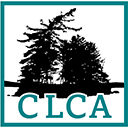Perhaps nothing is more vital to the environmental and economic health of the Canada Lakes and its community than water quality. The organization remains vigilant about threats such as acid rain, bacteria from septic pollution, and road salt run-off. To monitor water quality the CLCA sponsors regular testing of bacteria levels and participates in two regional water testing programs: Citizens Statewide Lake Assessment Program (CSLAP) and the Adirondack Lake Assessment Program (ALAP).
National Water Quality Monitoring Council: Sprite Creek site data in the Water Quality Portal.
CSLAP:
The Citizens Statewide Lake Assessment Program is a volunteer lake monitoring and education program that is managed by DEC and New York State Federation of Lake Associations (NYSFOLA). Canada Lake has been participating in CSLAP since 2001.
Attached are pdf copies of the recent annual reports and scorecards for Canada Lake:
Click here for a video on how to use CSLAP Report.
2024 CSLAP Report
2023 CSLAP Report
2022: CSLAP Season Report
2020: CSLAP Season Report
2019: CSLAP Season Report.
2019: Water Quality Summary for Canada Lake
2018: Water Quality Summary for Canada Lake
2017: CSLAP Season Report.
2016: Water Quality Summary for Canada Lake.
2015: Water Quality Summary ; Scorecard; Questions and Answers.
2014: Water Quality Summary ; Scorecard.
2013: Water Quality Summary ; Scorecard.
ALAP:
Adirondack Lake Assessment Program (ALAP) is a partnership between Protect the Adirondacks! and Paul Smith’s College Adirondack Watershed Institute. Canada Lake has participated since 2003. Pine Lake has participated since 2001. East Caroga Lake and West Caroga Lake started participating in 2016. This is a high quality longitudinal scientific study with more than 75 Adirondack lakes participating in 2016. All lakes are sampled by volunteers at the same time, usually three times during the summer season.
2023: ALAP Report: See page 14 for Canada Lake; Green Lake, p. 27; Irving Pond, p. 33; West Lake, p. 81.
2022: ALAP Report : See page 20 for Canada Lake
2021: ALAP Report: See page 13 for Canada Lake.
2020: ALAP Report: See page 13 for Canada Lake.
2017: ALAP Report See page 42 for Canada Lake.
2019: ALAP Report. See page 13 for Canada Lake
James Long has written the following summary of the recent ALAP tests:
Bacteria Monitoring Program:
Ongoing concerns about elevated bacteria levels lead the organization in 2007 to adopt a Bacteria Monitoring Protocol. Since then the monitoring has not shown any locations with repeated elevated total coliform levels that would warrant further laboratory tests to further indicate possible septic pollution. This does not mean that septic problems do not exist on properties on Canada Lake. Keep in mind that the time of sampling, recent rain events and the specific spot along shore where the actual sample was collected are all factors that could alter results for a given area.
As a lakeshore homeowner, YOU have a special responsibility to ensure that your septic systems are not polluting the lake:
DO
- Limit the water entering your tank. Use water saving fixtures. Fix toilet float valves, leaks, and dripping faucets. Spread clothes washing over the entire week.
- Pump the tank when necessary. This means every two to three years, or as indicated by your annual inspection.
- Divert surface water drainage away from the absorption field. If you do not know the condition of your septic system, have the system inspected.
DON’T
- Do not connect the basement sump pump or other “clean water” discharges to the septic tank.
- Do not put materials down drains that will clog the septic tank (fats, grease, coffee grounds, paper towels, sanitary napkins, disposable diapers, etc.).
- Do not put toxic substances in drains that might end up in the groundwater (cleaning fluids, oils, paints, disinfectants, pesticides, etc.).
- Do not use chemicals to clean your system. They may interfere with the biological action in the tank, clog the drain field by flushing sludge and scum into the field, or add toxic chemicals to groundwater. Starters are not necessary for new tanks or after pumping existing tanks.
Source: Wisconsin Department of Natural Resources, Wisconsin Lakes Partnership
